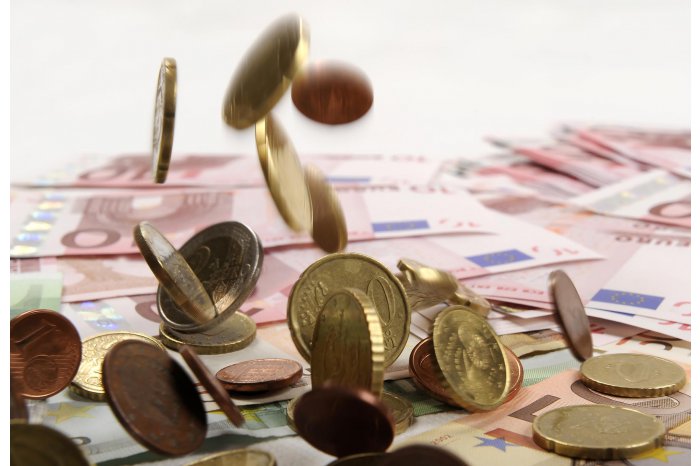Moldova's economy recovers after weak evolution two years ago
13:47 | 16.12.2017 Category: Economic
Economic commentary by the MOLDPRES State News Agency
Moldova has recorded a 5.4-per cent economic growth, in real terms, in the third quarter of this year, above the expectations of analysts and officials, which relied on a slower increase. This is a strong growth, especially against the background of a high comparison basis in the similar period of the year before, when the increase was of 6.5 per cent.
The growth of 3.8 per cent, registered in the first nine months of this year, also confirms the prospects of the Economics and Infrastructure Ministry, as well as of international financial institutions. The Economics Ministry, International Monetary Fund and World Bank anticipate a 3.5-per cent growth of the Moldovan economy in 2017; the European Bank for Reconstruction and Development is more reserved and expects a three-per cent increase.
The final consumption of residents’ households and the gross capital formation were the main engines of growth, although their contribution to the Gross Domestic Product (GDP) was different. The final consumption contributed with four percentage points to the growth of all the economy, while the gross capital formation had a contribution of 1.1 percentage points to the growth.
According to the National Statistics Bureau, in January-September, the wholesale and retail trade, maintenance and repair of vehicles and motorcycles, transport and depositing, activities of accommodation and public nourishment with the contribution of 1.4 percentage points to the GDP’s increase, followed by agriculture, industry and constructions, had the biggest contribution to the economic growth.
The first conclusion coming from official statistics is that, while in 2016, the economy was rising from one quarter to another, this year, the growth in the first quarter was of 3.1 per cent, 2.5 per cent in the second quarter and increased to 5.4 per cent in the third quarter.
Another conclusion is that, in fact, the model of economic growth has not changed. The Moldovan economy continues to grow due to a relatively better situation in agriculture and increase in the private consumption amid higher remittances and the increase in salaries in the private and public sectors. The change of the old economic model, based on export of people and import of goods, for an efficient one, based on investments, innovations and export of goods with high value added, a model about which they have been speaking for more years, remains a wished goal, not achieved as yet.
"Moldova has not started its entire potential of growth as yet,” experts of the German Economic Team (GET Moldau) have earlier ascertained, - a conclusion which remains valid also for the 2017 year. In a survey titled, What the Chisinau government should do for Moldova’s economy to unleash, its author Woldemar Walter said that “the significantly higher rates of increase are possible and needed, if Moldova wants to reach the level of more developed economies. For this, the structural reforms are inevitable. The present reforms from the banking sector show the way this can be achieved.”
Experts of the Expert-Grup Independent Analytical Centre, who forecast a six-per cent growth this year, the most optimistic prospect of all the launched ones, describe the 3.5-4 per cent increase “under expectations.” “The initially forecast growth of six per cent has not been materialized because of the bad weather conditions from the last spring, which undermined the agricultural production, because of the high level of incertitude among business people, which hindered the re-launching of crediting, private investments and industrial activity, as well as because of the slow march of reforms,” reads a quarterly publication of the MEGA Centre, launched this week-end.
Against this background, the economic growth from 2017 was based on the re-launch of the consumption, which grew preponderantly due to the remittances after two years of decrease, as well as on the boosting of public investments with the unlocking of the foreign assistance in the beginning of this year, experts said. They also said that, “practically, if we exclude the influence of these two factors, which are by definition temporary because of the small comparison basis, the economy would be on the rise.”
The necessity of changing the model of development and the structural reforms is obvious. In a note on the updated forecast of macro-economic indexes, the Economics and Infrastructure Ministry finds out that “in 2017, Moldova’s economy outlines some signs of revival: increase of investments in immobilized assets, fostering of the foreign trade, public revenues and expenses. The real increase of the salary and the rise in remittances from abroad led to the increase of consumption. Positive developments of the real sector are recorded.”
At the same time, the ministry said that “the state internal and external debt continues the ascendant trend. The vulnerability to external factors remains up-to-date.”
The increase in investments, budget allocations to the economy, foreign support, as well as the continuation of the reforms started this year, factors on which the government relies in 2018, might be an impetus for a more sustainable development, even if a slower three-percent growth of the economy is anticipated against 2017. The improvement of the Moldovan economy’s competitiveness should further remain the first priority for the authorities, Expert-Grup said.
Economics and Infrastructure Minister Octavian Calmic has recently showed confidence, in an interview, that, although the ministry forecast an increase of three percent in 2018, “this growth will be much higher.”
(Reporter V. Bercu, editor A. Raileanu)

